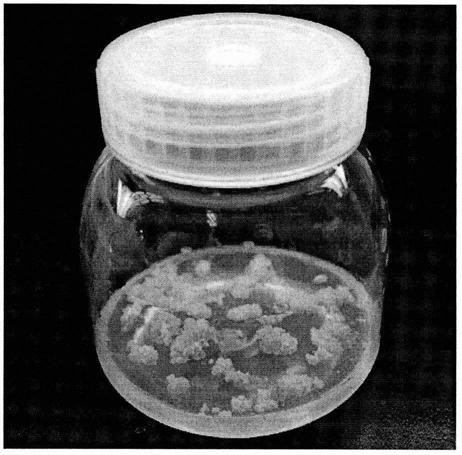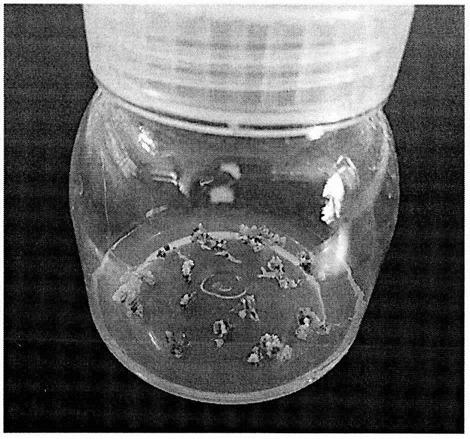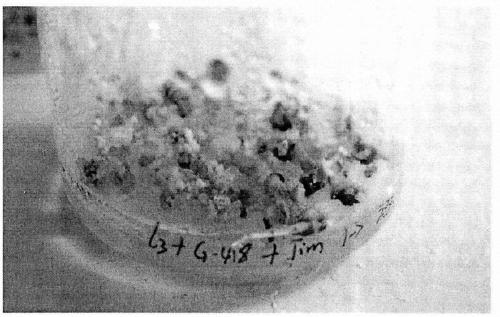A genetic transformation method of Iris germanica
A genetic transformation method, iris technology, applied in biochemical equipment and methods, horticultural methods, botanical equipment and methods, etc., to achieve strong differentiation and regeneration ability and good effect of Agrobacterium infection
- Summary
- Abstract
- Description
- Claims
- Application Information
AI Technical Summary
Problems solved by technology
Method used
Image
Examples
Embodiment 1
[0024] The present invention is a method for constructing genetic transformation system of German iris. The materials and reagents used are: German iris stem tip, Agrobacterium (EHA105), plasmid (PBI121); absolute ethanol, mercury, MS medium, 2,4- Dichlorophenoxyacetic acid (2,4-D), α-naphthaleneacetic acid (NAA), 6-benzylaminopurine (6-BA), rifampicin (Rif), acetosyringone (AS), geneticin ( G418), timentin (Tim), sucrose and agar powder. Main equipment: light incubator, ultra-clean workbench, centrifuge, PCR amplification instrument.
[0025] The steps are as follows:
[0026] 1. Induction and multiplication of callus of German iris: pick up 2-3 year old German iris plants from the nursery and bring them back to the laboratory, cut off the leaves and rhizomes, keep about 1cm from the top and bottom of the stem tip, and use 10% washing solution Soak for 10 minutes, then rinse with running water for 1 hour, move to the ultra-clean workbench, disinfect with 75% ethanol for 45 secon...
Embodiment 2
[0036] Take the well-growing stem tip, young tender ovary, young tender flower bud, and root tip as explants. The rest of the treatment steps are the same as in Example 1. The pollution rate and callus induction rate of the explants were counted at 45 days. The state and color of the callus, the results are shown in Table 1.
[0037] Table 1 The effect of different explants on callus induction of German iris
[0038]
[0039]
[0040] Analysis of the above data shows that the present invention uses the stem tip of German iris as the explant, which has the characteristics of a callus induction rate as high as 82%, good embryonicity, and easy availability of materials.
Embodiment 3
[0042] Using the treatment method in Example 1, the difference lies in the acetosyringone and OD of the Agrobacterium infection solution 600 The value of, the statistical positive rate, the results are shown in Table 2.
[0043] Table 2 Different acetosyringone concentrations and OD 600 The effect of the value of on conversion performance
[0044]
[0045] Analysis of the above data shows that the acetosyringone of the Agrobacterium infection solution in the present invention is 200 mg / L and OD 600 When the value of is 0.4, the positive rate is the highest.
PUM
 Login to View More
Login to View More Abstract
Description
Claims
Application Information
 Login to View More
Login to View More - R&D
- Intellectual Property
- Life Sciences
- Materials
- Tech Scout
- Unparalleled Data Quality
- Higher Quality Content
- 60% Fewer Hallucinations
Browse by: Latest US Patents, China's latest patents, Technical Efficacy Thesaurus, Application Domain, Technology Topic, Popular Technical Reports.
© 2025 PatSnap. All rights reserved.Legal|Privacy policy|Modern Slavery Act Transparency Statement|Sitemap|About US| Contact US: help@patsnap.com



